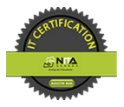Introduction
In today’s fast-paced business landscape, effective collaboration and efficiency are key to staying ahead in the competitive market. One area where businesses can significantly improve both collaboration and efficiency is in supply chain management. Enter the supplier portal – a powerful tool that enables businesses to streamline communication, optimize processes, and build stronger relationships with their suppliers. In this comprehensive guide, we’ll explore the ins and outs of supplier portals, their benefits, key features, and best practices for implementation.
What is a Supplier Portal?
A supplier portal is a secure online platform that allows businesses to interact and collaborate with their suppliers in a centralized and streamlined manner. It serves as a one-stop-shop for managing various aspects of the supplier relationship, including communication, order management, invoicing, performance tracking, and more. By providing suppliers with access to relevant information and tools, supplier portals facilitate transparency, efficiency, and collaboration throughout the supply chain.
Benefits of Supplier Portals
The benefits of implementing a supplier portal are manifold:
- Improved Communication: Supplier portals provide a centralized communication hub where businesses and suppliers can exchange messages, documents, and updates in real-time, reducing the need for emails and phone calls.
- Streamlined Procurement Processes: From purchase order management to invoice processing, supplier portals automate and streamline various procurement processes, reducing manual errors and accelerating cycle times.
- Enhanced Visibility and Transparency: By providing suppliers with access to real-time data and analytics, supplier portals enable greater visibility into inventory levels, order statuses, and performance metrics, fostering transparency and informed decision-making.
- Cost Savings: By eliminating paper-based processes, reducing manual labor, and optimizing supply chain workflows, supplier portals help businesses reduce operational costs and achieve greater cost efficiency.
- Stronger Supplier Relationships: Supplier portals facilitate closer collaboration and communication between businesses and suppliers, leading to stronger relationships built on trust, mutual respect, and shared goals.
Key Features of Supplier Portals
While the specific features of supplier portals may vary depending on the vendor and industry, some common key features include:
- Purchase Order Management: Create, track, and manage purchase orders electronically, reducing paperwork and manual errors.
- Invoice Management: Automate invoice submission, approval workflows, and payment processing, improving accuracy and timeliness.
- Document Management: Centralize document storage and sharing, ensuring easy access to contracts, agreements, and compliance documents.
- Performance Analytics: Track supplier performance metrics such as delivery performance, quality ratings, and lead times, enabling data-driven decision-making.
- Collaboration Tools: Facilitate collaboration through messaging, document sharing, and task assignment features, improving communication and teamwork.
- Integration Capabilities: Integrate with other systems such as ERP, CRM, and inventory management systems for seamless data exchange and process automation.
Best Practices for Implementing Supplier Portals
Implementing a supplier portal is a strategic initiative that requires careful planning and execution to maximize its effectiveness. Here are some best practices to ensure a successful implementation:
- Define Clear Objectives: Clearly articulate your objectives for implementing a supplier portal. Whether it’s streamlining procurement processes, improving collaboration, or enhancing transparency, having clear goals will guide the implementation process and ensure alignment with your business objectives.
- Engage Stakeholders Early: Involve key stakeholders from both the business and supplier sides early in the process. Gather input, requirements, and feedback to ensure that the supplier portal meets the needs of all parties involved. Engaging stakeholders from the outset will also help gain buy-in and support for the initiative.
- Choose the Right Solution: Selecting the right supplier portal solution is critical to success. Evaluate potential solutions based on factors such as functionality, scalability, security, and ease of use. Choose a solution that aligns with your business requirements and can accommodate future growth and changes in your supply chain.
- Provide Comprehensive Training: Offer thorough training and support to both internal users and external suppliers. Ensure that users understand how to use the portal effectively and are equipped with the necessary skills to navigate the platform. Providing ongoing support and resources will help drive adoption and maximize the benefits of the portal.
- Focus on User Experience: Design the supplier portal with user experience in mind. Make the interface intuitive, user-friendly, and visually appealing. Consider the needs and preferences of both internal users and external suppliers, and incorporate feedback from usability testing to optimize the portal’s usability and effectiveness.
- Ensure Data Security and Compliance: Protecting sensitive data is paramount when implementing a supplier portal. Implement robust security measures to safeguard confidential information and ensure compliance with data protection regulations and industry standards. Regularly assess and update security protocols to mitigate risks and vulnerabilities.
- Promote Collaboration and Communication: Foster a culture of collaboration and communication among users of the supplier portal. Encourage open dialogue, information sharing, and collaboration to drive efficiencies and strengthen relationships with suppliers. Leverage features such as messaging, alerts, and notifications to facilitate real-time communication and collaboration.
- Monitor Performance and Iterate: Continuously monitor the performance of the supplier portal and gather feedback from users to identify areas for improvement. Track key performance indicators (KPIs) related to adoption, usage, and effectiveness, and use this data to inform ongoing enhancements and iterations to the portal. By regularly assessing performance and making iterative improvements, you can ensure that the supplier portal remains aligned with your business goals and continues to deliver value over time.
Conclusion
In conclusion, supplier portals are powerful tools that can transform supply chain management by enhancing collaboration, efficiency, and transparency. By leveraging the benefits of supplier portals and following best practices for implementation, businesses can streamline procurement processes, strengthen supplier relationships, and gain a competitive edge in today’s dynamic marketplace. Embrace the power of supplier portals and take your supply chain management to new heights!
Blog Reviewed by Kumaresan Selvaraj











